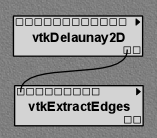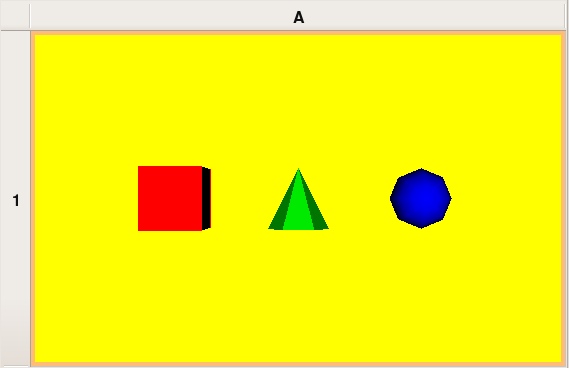Difference between revisions of "SciVisFall2008/Assignment 0"
m |
|||
| Line 3: | Line 3: | ||
== Problem 1: query by tag, execute, annotate, query by example and prune history == | |||
To make sure you know how to search | To make sure you know how to search | ||
| Line 28: | Line 28: | ||
and pressing "Delete". | and pressing "Delete". | ||
== Problem 2: pipeline from an image == | |||
From the root version on the history tree design a | From the root version on the history tree design a | ||
| Line 37: | Line 37: | ||
[[Image:Problem2.png]] | [[Image:Problem2.png]] | ||
== Problem 3: pipeline from C++ code == | |||
Starting from the root version on the history | Starting from the root version on the history | ||
| Line 45: | Line 45: | ||
Tag the version of the resulting pipeline with label "Problem 3". | Tag the version of the resulting pipeline with label "Problem 3". | ||
== Problem 4: parameter exploration == | |||
Find the version tagged "spx" in the history tree. | Find the version tagged "spx" in the history tree. | ||
| Line 79: | Line 79: | ||
menu again.) | menu again.) | ||
== Problem 5: matplotlib == | |||
In the version tree node "iso + histogram", part of the pipeline computes a | In the version tree node "iso + histogram", part of the pipeline computes a | ||
Revision as of 01:33, 9 September 2008
Use vistrails file assignment0.vt as the starting point for all the following problems.
Problem 1: query by tag, execute, annotate, query by example and prune history
To make sure you know how to search versions in the history tree of Vistrails do the following simple tasks:
1) Locate the version tagged "101" in the History tree. Use the text field close to the magnifying glass icon in the right side of the window. Execute this version and annotate it with the name that appears in the visualization.
2) Find the only version in the history tree that has the pattern shown below. Use the query by example feature of Vistrails. Annotate this version with the word "ok".
3) After finishing the above tasks, prune the version tagged with "Prune after Problem 1" to keep a smaller Version tree. You can prune by selecting the version and pressing "Delete".
Problem 2: pipeline from an image
From the root version on the history tree design a pipeline to reproduce the image below.
Tag the version with the resulting pipeline with label "Problem 2".
Problem 3: pipeline from C++ code
Starting from the root version on the history tree design a pipeline that is equivalent to the C++ source contQuad.cxx.
Tag the version of the resulting pipeline with label "Problem 3".
Problem 4: parameter exploration
Find the version tagged "spx" in the history tree. Execute this version and play with the resulting visualization. The goal is to generate several isosurfaces of this model using the parameter exploration feature of Vistrails.
First a modification in the "spx" pipeline is necessary to be able to extract a single isosurface of the model. Here are the steps: (1) modify the "spx" pipeline by inserting a "vtkContourFilter" in the middle of the connection from "vtkUnstructuredGridReader" to "vtkDataSetMapper" and (2) select the new "vtkContourFilter" and use the "SetValue" method with parameters 0 (Integer) and 0.5 (Float) to extract the isosurface of value 0.5 from the model. Execute this pipeline and you should see a green isosurface.
With the "modified-from-spx" pipeline selected in the history tree go to the "Exploration" view of Vistrails. On the right side of the screen you should see the text "SetValue(0,0.5)". Drag this text to the middle of the screen. Now, for the Float parameter, select the range from 0.03 to 1. Choose to generate 6 steps in a single horizontal row of the spreadsheet. Press "Execute". As a result you should 6 isosurfaces in the spreadsheet. Identify the "red" one, and add it to the version tree. This can be done by going into the "View" menu on the spreadsheet, and clicking on the "Create Version" icon in the spreadsheet cell showing the blue isosurface. The history tree should have a new node that you should tag "Problem 4". (You can change the spreadsheet back to interactive mode by using the "View" menu again.)
Problem 5: matplotlib
In the version tree node "iso + histogram", part of the pipeline computes a histogram of the scalar values of a structured volumetric grid. As part of this problem, you need to compute the histogram for the unstructured grid from the version "spx". You should use 30 bins for your histogram.
You should tag the version of the resulting pipeline as "Problem 5".

